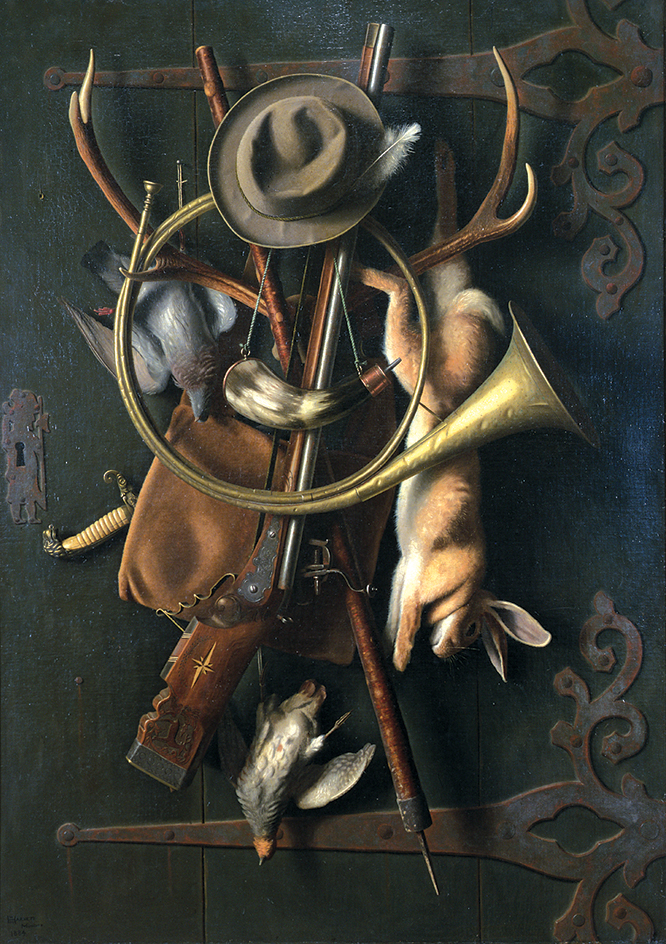Harnett, William Michael (1848-1892), is often called the leading American still-life painter of the late 1800’s. His style of “fool-the-eye” realism was hard and precise, well suited to such subjects as groups of objects on tabletops and minutely realistic paintings of currency. Many of his paintings use objects to tell stories or symbolize moral themes.

Harnett was born in Ireland and was brought to Philadelphia as a baby. He studied painting at the National Academy of Design in New York City. In 1873, he began painting still lifes that show the influence of the painting style of the Peale family. By 1880, he had saved enough money to travel to Europe. He spent much time in Munich, Germany, where his realistic style received much praise. Although at the height of his career, Harnett was prevented by illness from doing much painting after 1886. His work was largely forgotten after his death but rediscovered about 1935.
